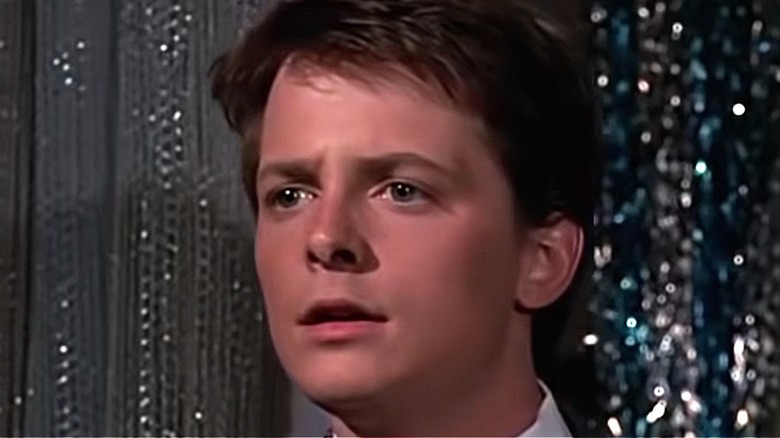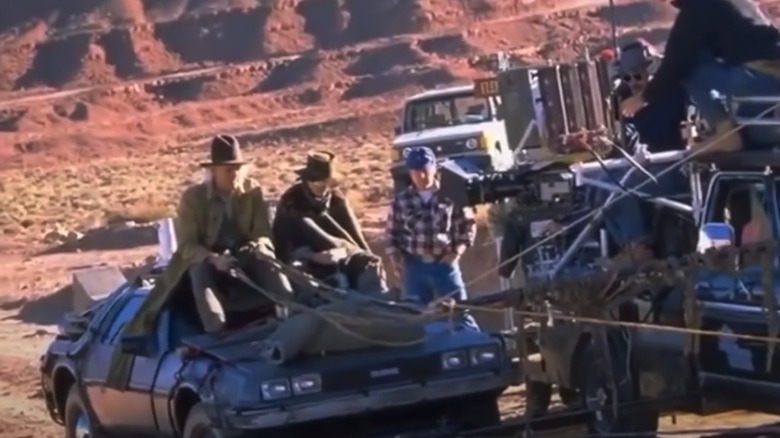What The Back To The Future Movies Looked Like Before Special Effects
The "Back to the Future" trilogy, starring Michael J. Fox as teenager Marty McFly and Christopher Lloyd as his unlikely best friend Emmett "Doc" Brown, has earned almost a billion dollars worldwide combined (via The Numbers). The 1985, 1989, and 1990 sci-fi offerings from director Robert Zemeckis remain popular nearly four decades after Marty took his first voyage through time.
Marty travels between the years 1985, 1955, 2015, and 1885 in the three blockbusters, correcting mistakes of the past to help ensure a solid future for himself and his kin, past and present. The multigenerational good-vs-evil battle between various McFlys and Biff, Griff, and Buford "Mad Dog" Tannen (all played by Thomas F. Wilson) — along with an intricately woven tale of time travel and adventure through both everyday and historically significant moments — has made the series a cornerstone of '80s nostalgia (via Vox).
All three films were made before the advent of modern CGI special effects technology. Zemeckis and visual effects wizards Ken Ralston and Wes Takahashi of Industrial Light and Magic combined the use of physical effects and modeling to achieve the spectacular final results that earned the series its legion of fans across the globe. But the genius of the at-first-glance simple effects becomes even more impressive when the magic is stripped away to reveal how the shots were constructed.
The three Back to the Future movies used relatively simple special effects
Given the spectacular visual perfection of the three "Back to the Future" movies, it's easy to assume that they were a marvel of special effects technology. But even the third film was shot long before the availability of computer-generated effects and was made largely using models, blue-green composites, good old-fashioned hand-drawn animation, and other physical effects and stunts (via American Cinematographer).
For example, the flaming tire tracks left behind by the DeLorean when it hits 88 miles per hour were made by lighting two gasoline trails and adding the footage to that of the car speeding across the parking lot. Jeffrey Okun, the chair of the Visual Effects Society in Los Angeles, California, spoke with Vox about the stunt, having gotten the information from being friends with the man who did it. The "flying" car itself was simply a model held aloft with wire or a non-running shell suspended from a crane, and the hoverboard in "Back to the Future Part II" was just an ordinary skateboard deck made to look like it's floating by "being held out on a pole."
Perhaps the most revolutionary innovation was the VistaGlide multi-camera technology developed by Industrial Light and Magic, allowing multiple characters played by Fox to interact with each other in scenes in the second and third movies. Also called the Tondreau Dolly, the system was a logistical — yet successful — tangle of camera coordination and actor doubles, working as "a portable, computerized dolly system which remembers the complete movements of the camera" (via American Cinematographer).
Zemeckis and Ralston's simple visual tricks were so effective that it's impossible to guess that the actors were constantly acting amongst cranes, dollies, and suspension rigs of all sorts while film. Thanks to all of the hard work, the result is delightful.

